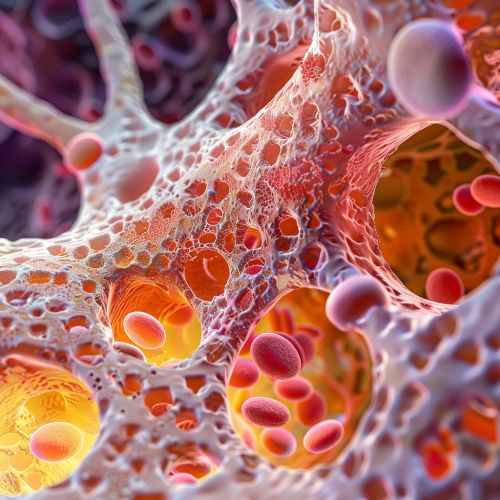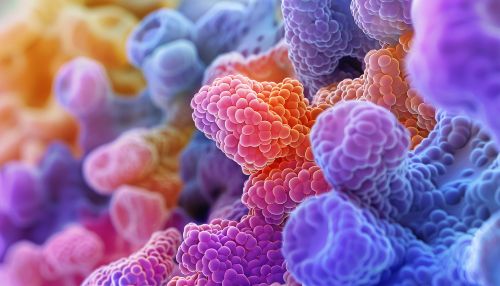Lipoprotein metabolism
Overview
Lipoprotein metabolism is a complex biological process involving the synthesis, transport, and degradation of lipoproteins. Lipoproteins are particles composed of lipids and proteins, which function to transport lipids, such as cholesterol and triglycerides, throughout the body. The metabolism of lipoproteins is crucial for maintaining lipid homeostasis and is closely associated with various metabolic disorders, including atherosclerosis, coronary artery disease, and hyperlipidemia.


Lipoprotein Structure
Lipoproteins are spherical particles with a core of hydrophobic lipids, surrounded by a monolayer of phospholipids and proteins. The proteins, known as apolipoproteins, play key roles in lipoprotein metabolism by acting as ligands for receptors and as cofactors for enzymes. The major classes of lipoproteins, classified based on their density, include chylomicrons, very-low-density lipoprotein (VLDL), intermediate-density lipoprotein (IDL), low-density lipoprotein (LDL), and high-density lipoprotein (HDL).
Lipoprotein Synthesis
Lipoprotein synthesis occurs in the liver and intestine, the two major organs involved in lipid metabolism. In the intestine, dietary lipids are incorporated into chylomicrons, which are then released into the lymphatic system and bloodstream. In the liver, VLDL particles are synthesized and secreted into the bloodstream. The synthesis of lipoproteins involves the assembly of lipids and apolipoproteins, a process facilitated by various enzymes and lipid transfer proteins.
Lipoprotein Transport
The primary function of lipoproteins is to transport lipids throughout the body. Chylomicrons transport dietary lipids from the intestine to other tissues, while VLDL transports endogenous lipids from the liver. Lipoproteins deliver lipids to tissues through receptor-mediated endocytosis or lipoprotein lipase-mediated hydrolysis. The remnants of chylomicrons and VLDL are further metabolized to LDL, which delivers cholesterol to cells. HDL, on the other hand, is involved in reverse cholesterol transport, carrying excess cholesterol from peripheral tissues back to the liver.
Lipoprotein Degradation
Lipoprotein degradation occurs primarily in the liver, which has receptors for various lipoproteins. LDL is taken up by the liver through the LDL receptor, while HDL is taken up through the scavenger receptor class B type I (SR-BI). Inside the cells, lipoproteins are degraded in lysosomes, releasing their lipid contents for further metabolism or excretion.
Regulation of Lipoprotein Metabolism
The metabolism of lipoproteins is tightly regulated by various factors, including hormones, dietary intake, and genetic factors. Hormones such as insulin and glucagon regulate lipoprotein metabolism by modulating the activity of key enzymes and receptors. Dietary intake of fats and cholesterol can also influence lipoprotein levels. Genetic factors can lead to dyslipidemias, disorders characterized by abnormal levels of lipoproteins.
Lipoprotein Metabolism and Disease
Abnormalities in lipoprotein metabolism can lead to various metabolic disorders. Elevated levels of LDL, known as hypercholesterolemia, can lead to atherosclerosis and coronary artery disease. Deficiency or dysfunction of HDL can lead to decreased reverse cholesterol transport and increased risk of cardiovascular disease. Genetic disorders such as familial hypercholesterolemia and Tangier disease are caused by defects in lipoprotein receptors or enzymes.
